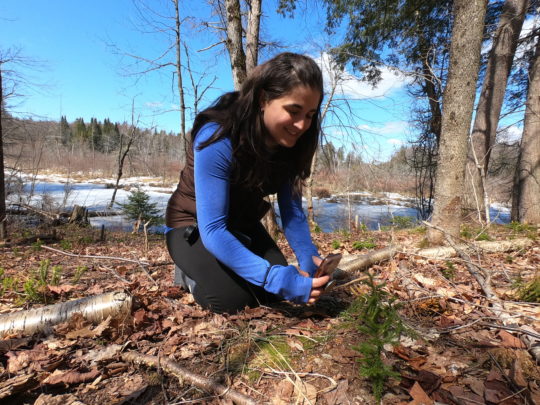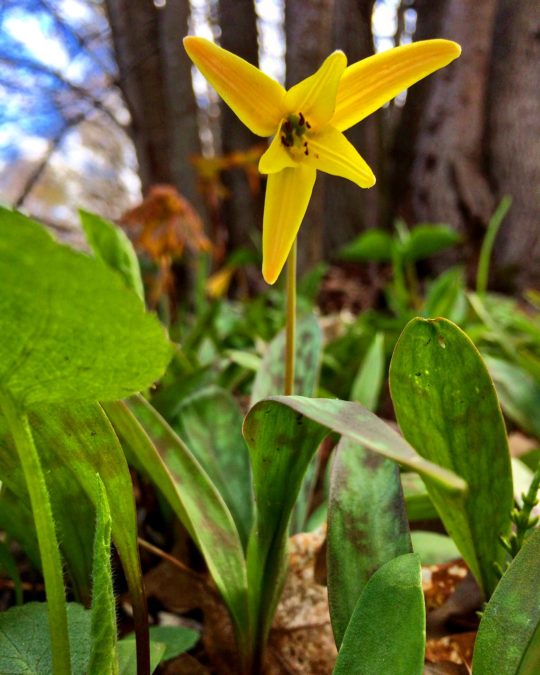
With spring comes many discoveries: migrating birds, singing frogs, and surprising flowers. What better way to welcome in the new season than listening to these sounds and looking for these sights? Recording species that you see throughout the entire year is a great way to learn more about our natural environment at home. These sightings can contribute to a much larger scale of learning, through “citizen science”, also known as “community science”.
Citizen science is the gathering of nature observations and reports by volunteers and the general public. Submitted on a digital platform, and collected by the thousands, these observations provide important information for science. Having more observations helps better estimate the population size of a species or helps follow the migration or spread of a species, or gives a better understanding of threats such as what is killed on roads. The more information collected, the better our understanding about wildlife and the environment.
As part of the Maamwi Anijiakiziwin project, the Georgian Bay Biosphere has launched a new iNaturalist project for the region. This project will use the free iNaturalist app to tally all observations made within the Georgian Bay Biosphere area and beyond. Every observation submitted by the public will help to compile more complete information about the species in our area and help researchers see more clearly the threats and where efforts into research and mitigation should be directed.

“iNaturalist is great way to explore, learn, and contribute to the understanding of our natural world, whether you are a beginner or an experienced naturalist,” says Tianna Burke, Conservation Biologist for Georgian Bay Biosphere. Tianna describes iNaturalist as a “well-designed digital platform that quickly uploads your sightings of any species at all – from the tiniest moss, to the uncommon flowers, to the birds we see everyday in our backyards.”
“I am very excited to watch how this user-friendly citizen science project enhances our ability to direct research and mitigation to help protect species,” says Tianna, who can be reached with questions about iNaturalist at [email protected].
Parry Sound Nature Club member, Dianna Wolfe, who has used iNaturalist for a few years, explains how iNaturalist has been a great way to start learning about plants and insects that she couldn’t identify before. Dianna enjoys how “it’s so easy to take a photo with [her] phone and upload it using the app, which then suggests the most likely identifications for me on the spot.” She adds, “my husband and I have been using it to catalogue all of the biodiversity on our property . . . It’s fun!”.
During a time where physical distancing is important for community health, learning about our natural world is something that we can do as an individual or a family right in our backyard.
Quick Tips to Get Started

- You do not need to know the species name to upload it to iNaturalist – experts will help!
- iNaturalist can be used as both a website and/or phone app.
- To participate, create an account on www.iNaturalist.ca and join the “project” for Georgian Bay Biosphere.
- Once joined, and you want to upload a photo of a species, be sure to select the Georgian Bay Biosphere Project when submitting observations.
- A direct link to project is: https://inaturalist.ca/projects/georgian-bay-biosphere
- Follow your friends and see what their latest findings are. iNaturalist is a great way to build a community. Challenge your neighbours to add their sightings!
- With many species specialists and budding naturalists online, watch as your sightings get identified and/or vouched by others. It’s a great way to learn about the species YOU added to the project.
- iNaturalist Canada is led by the Canadian Wildlife Federation (CWF) along with Parks Canada, NatureServe Canada and the Royal Ontario Museum (ROM) in collaboration with iNaturalist.org which is a joint initiative of the California Academy of Sciences and the National Geographic Society.
- GBBR is excited to use iNaturalist to host citizen science events and contests – stay tuned!